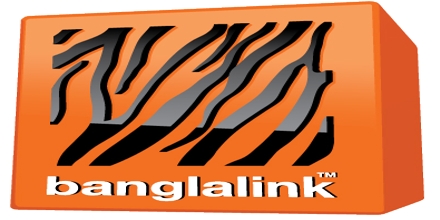Comparative analysis of Banglalink: in perspective of Bangladesh
The telecom industry of Bangladesh is, at the moment, experiencing accelerated growth. According to one telecom analyst, Abu Saeed Khan, the growth curve may resemble a “hockey stick” by the end of 2006.
All credit this fact to Orascom’s acquisition of Sheba Pvt. Telecom in September 2004. Considering its track record, people knew that the newly formed Banglalink™ would shake the market somehow.
Since its entry into the market, the company has managed to make the others stand up and take notice. Its subscriber base is growing at a very high rate per month. Plotting the position of the company in a BCG matrix reveals that the business is a question mark, and with more investment injected into the company it can come closer to, if not become, the star. This will be the likely scenario, as the CEO of the company announced during a press conference recently that it was planning to invest a further $180 million for expansion purposes.
If one studies the comparative analysis of the market, it can be seen that GP has already built brand equity among its subscribers. Thus far, it has been able to hold on to its leadership without doing very much. However, this is likely to change soon with the other telecoms taking steps to increase their market share by keeping the consumers in mind. Already people are using a Banglalink SIM as it has lucrative tariff rate and other value added services. The company has the expertise and background to pull off that kind of a game.
Introduction
It was with these statements that Orascom launched its first package in Bangladesh that they had hoped to rock the telecom industry. However, neither their competitors nor the public had needed these words to convince them that Banglalink™ would be bringing them a great offering. Ever since Orascom bought off Sheba (Pvt.) Telecom in 2004, people had been expecting something big, given their record o f accomplishment in other countries.
The present economic system is characterized by globalization and free flow of information across the countries. Most o f the countries are trying to accept this idea for the development o f their economic wheel and accommodating mere overseas for this purpose. By having, access to information and communication network the economic participants at micro and macro level can be benefited. This idea is not limited to developed countries but it is more appealing to the developing countries whether there exists a gap between the demand & supply.
In 2005, a telecommunication industry research institution published that Banglalink is the fastest growing mobile company in the world. Obviously, this is a proud for Bangladesh. Being a part o f this company, I am really excited. Since OTH started its business in Bangladesh, the company had hoped to rock the telecom industry. As the telecom industry is growing very rapidly in our country, Banglalink is keeping pace with this growth. Since its subscriber growth rate in 2005 was 2825%.”Quite Surprising!”
Bangladesh is obviously well suited for Orascom Telecom Holding’s ongoing expansion into emerging market. Banglalink is well prepared for taking the challenges for providing top quality services nation wide. Banglalink provided many innovative ideas in telecom industry for the last year and still keeping its promises.
Before entrance of Orascom Telecom Holding in Bangladesh, there was a monopoly market. As soon as this company came, the tariff rate decreases drastically which was very much desired by our people. Therefore, Orascom is not only a mobile company but also a blessing for our country.
Though Banlalink is a multinational, company it’s branding created an image to our grass root people. 1 should say, It need not to recognize Banglalink by its’ name but only seeing the brand logo.
Scope & Objective
Telecommunication is very much comprehensive & complex industry. It deals with different areas to capture the market & it requires huge promotional activities to survive.
More over they have to come up with different innovative ideas to have a position in the market. Thus, it is observed that the study covers a broad spectrum such as product, price, promotion, govt, regulation etc. The study will focus on Banglalink only among the other companies operating in the industry. Based on the above facts this specific objectives of the study is as follows
- To give an overview of Telecommunication industry in Bangladesh.
- To give an insight into the product of Banglallink.
- To give the administrative procedure of Banglalinnk.
- To deal with the performance of the company.
- To give a comprehensive study with the other companies in the market.
Methodology
Banglalink™ – Be mobile, B’linked
The study is based on primary and secondary data. Information has been collected from different published materials such as annual report, Newspaper, books and periodicals, internet etc. Financial analysis has been done by using appropriate mathematical techniques. Primary source consists mainly of personal observation during the attachment period. Interviews with the sales people at direct sales booth & direct interaction with customers helped in conceptualizing what customers are looking for. Frequently asked questions from customer gave an idea as to what they considered were important factors & not just, what the telecom companies thought were important.
Secondary information came mainly from websites, mainly the official website of the telecom companies. A few articles on newspaper also helped in the collection of information. Data used this report are mostly updated till date. The mass-market data are updated based on standard package. Moreover some date are given here are the approximate value of the calculation.
Constraint
Several information regarding ongoing projects could not be used to analyze further competitive positioning of Banglalink, as they were considered confidential. As I was working for Banglalink, I could not interview employees from its competitors, as would have been the case normally, and had to rely solely on information available to the public. Some of the data used this report is not recently updated and some factors are being hided by the company.
Chapter Summary: Not only the developed countries but also the developing countries are good market for telecommunication companies. In this condition, Bangladesh is obviously a huge and attractive market. As OTH focuses on expanding their business in Muslim countries, they discovered a potential market in our country. Both secondary & primary sources had been explored to grab data for the report.
However, some limitations were faced which were negligible.
Introduction to the company
Name: Banglalink™
Location: Headquarter in Dhaka, Bangladesh.
Historical background: Banglalink™ is the latest addition to the GSM family of OTH.
Naguib Sawiris, Chairman and CEO of OTH, announced the acquisition o f Sheba Telecom (Pvt.) Limited with a cost of US$60m in September of 2004.
Parent company
Orascom Telecom Holding S.A.E (OTH), one of the most dynamic telecommunications company in the world, was established in 1998. Originally an Egyptian company, headquartered in Giza, Egypt, now operates in more than 10 countries and has grown to become the largest and most diversified GSM (Global Systems for Mobile Communications) network operator in the Middle East, Africa and Asia. With nine licenses covering the region, Orascom Telecom has positioned itself as a leading telecommunications conglomerate in emerging markets of this region. In fact, most of its companies are leading the industry in the countries they operate, notably Mobilink in Pakistan. It is also the largest capitalized company on the Cairo & Alexandria Stock Exchange.
Orascom is a conglomerate o f three different companies:
- Orascom Construction Industries,
- Orascom Technologies, and
- Orascom for Hotels and Tourism.
However, Orascom Telecom is a holding company that owns and runs several mobile GSM networks across Egypt, the Middle East, Africa, and the Indian subcontinent. A Part of Orascom Telecom is publicly traded on the London and Cairo Stock Exchanges and the Sawiris family in Egypt owns the remainder of shares in the company.
Within five years from the date o f its inception, OT established strong presence in the GSM Association (the world’s leading wireless industry representative body), represented by Chairman and CEO Mr. Naguib Sawiris, who was selected to join the GSM Association’s CEO Board since 2003. OT will have a strong impact on the multi-billion dollar global wireless network business, and will help guide the strategic planning for the future of the industry in the world.
The Sawiris family, o f Egypt, owns the majority stake in the company (56.9%). Orascom Telecom Holding is a leading player in the Cairo and Alexandria Stock Exchange where it is traded under the symbol (ORTE.CA). On the London Stock Exchange, its GDR is traded under the symbol (ORTEq.L). OTH’s IPO raised US$320 million during the year 2000, and was the largest offering on the Egyptian Stock Market at the time.
Information about Founder
Name of the founder(s): Orascom Telecom Holdings (OTH) group.
Characteristics of founder(s): Orascom Telecom Holding S.A.E. (“Orascom Telecom”) is a leading mobile telecommunications company operating in nine emerging markets in the Middle East, Africa and South Asia.
Established in 1998, the company has acquired nine operating licenses in this region. With nearly 520 million people and an average mobile telephony penetration of only 5% falling under these licenses, Orascom Telecom has positioned itself as a leading telecommunications conglomerate in the emerging markets of this region. The organization has managed to build an amazing subscriber base of around 15 million in just a short span of six years by the end of 2004.
The capital of Orascom Telecom is estimated at 1.1 billion Egyptian Pound represented in 110 million shares.
Telecommunication Industry in Bangladesh
No other communication device except mobile has kept so much impact in Bangladesh. In every aspect of our life mobile plays a very important role in our country. I should say, mobile company has brought socio cultural change in our country. On the other hand, it plays an important role in economical sector.
There are five-telecommunication companies in our country. The main reason for such a small numbers is the regularization of the industry by the government. There is also a new company from Middle East (Warid) is ready to launch their product in Bangladesh very soon. For years, the Bangladesh Telegraph & telephone board (BTTB) had been the sole player in the market. Bangladesh telecom limited(BTL) was the first entrant in this market backed in 1989 when it was awarded a license to operate cellular, paging and other wireless communication networks been renamed to pacific Bangladesh telecom limited and given a brand name Citycell Digital to it’s cellular services. After that, Grameen Phone, Aktel and Banglalink has entered the industry with various changes in between BTRC has formed Teletalk Bangladesh Ltd. on behalf of the mass public.
Meanwhile, the industry is also set with licenses to operate PSTN or fixed phone lines in the upcoming months.
While the market for mobile phones, specifically, has been growing steadily since its introduction back in 1993, in the past 18 months the market has more than doubled, growing from 1.5 million subscribers in early 2004 to 4.2 million at the end of 2005.
At this stage, with market penetration being less than 2% in a population of 140 million people, there is great potential for expanding subscriber base in the country. However, in Bangladesh, as well as in many other emerging markets, operators concentrate on raising the ARPU (Average Return per Unit), which is an appropriate strategy for developed markets where the mobile market has been saturated. In emerging markets, operators should concentrate more on acquiring new subscribers and on obtaining a greater pie of the market share.
Over the last two to three years, the number o f mobile subscribers in Bangladesh has been doubled on an annual basis. If the government is able to continue the deregulation process and more mobile operators are licensed, it is predicted that there will be around 25 million mobile subscribers in the country by 2007.
Following tremendous growth in the country’s mobile phone industry over the last few couple of years, Bangladesh, despite of being a developing country, is not far away from reaching remarkable phone users by the end of year 2015.
In Bangladesh there are some impressive mobile operators here, the country also has a pool of brilliant software developers, apart from having a positive rate o f economic growth as well as a progressive government. As Bangladesh is ‘one of the key markets,’ no doubt, growing high and it is heading towards the right direction.
The government can support growth through making legislative framework, developing infrastructure and preparing tax-free mechanism.
Grameen Phone Ltd
GrameenPhone is at present leading the industry with 10 million subscribers out of a total market size of 20 million (approximately). It plans to provide network coverage to 90% of the market by the end o f the year.
The company was formed through a joint venture between Telenor, a leading Norwegian mobile company, and Grameen Telecom, a not-for-profit organization established by Professor Dr. Yunus. More than 60% ownership belongs to Telenor.
Banglalink
Banglalink is the latest addition to the GSM family in our country. It started its business by the acquisition o f Sheba Telecom (Pvt.) Limited with a cost o f US$60m.
The company aims to make a difference in the lives o f the people. Its vision is to “understand people’s needs best and will create and deliver appropriate communication services to improve people’s life and make it easier”. Their mission is, therefore, to reduce the total cost of ownership o f buying and using a mobile phone.
Moreover, to achieve this vision, the company has established some values that it tries to instill in its employees. They want their employees, and the company as a result, to be straight forward, reliable, innovative and, above all, passionate.
As Sheba Telecom, the worst performing network operator in the industry, the company had only 30,000 subscribers. To dispel this image, OTH had re-branded Sheba as Banglalink™ in an attempt to give it a completely new image.
With that kind o f a reputation at its disposition, the Banglalink™ management has placed one of the highest priorities on improving its network. In this respect, they have installed state-of-the-art equipment from Siemens and Huawei and brought in over 1,000 people, including experts, from 15 countries around the world to set up the required infrastructure. The system took a record of four months (less than half the normal time) to build. In 2005 alone, Orascom invested $120 million, earmarking close to another $300 million for future investments.
While Banglalink™ started out quite small, it has increased its coverage from 9 to 23 districts in just over three months. Moreover, in less than only four months, it increased 400,000 subscribers from a mere 30,000 in February before the launch.
City Cell
City Cell was the first mobile operator to enter the country, was back in 1989 when Bangladesh Telecom Limited got a license to operate cellular, paging, and other wireless communication networks. However, in February 1996, the company was renamed as Pacific Bangladesh Telecom Limited (PBTL) and the CityCell brand launched, just one year before GP.
While the market share o f CityCell is nothing to be proud of, it is true that CityCell is behind many of the features we take for granted from our operators. For example, it was the first company to introduce the 15-second pulse rate, a long time before the pulse war began. Moreover, it was the first ever operator to introduce off-peak rates, SMS and IDD/NWD for pre-paid subscribers.
Singapore Telecommunications Limited (SingTel) bought 45% equity interest in the company, with an option to buy 60%. Thus, CityCell may turn around and make a comeback very soon.
Teletalk
Teletalk formally introduced on December 28, 2004. The company will release 2.5 lakh SIM cards in the first phase, out of targeted 10-lakh connections that would be sold by mid 2007.
While there were many people willing to purchase this line due to the lower tariff it promises, there were two problems associated with the company. First, it did not provide any interconnectivity with the other private mobile operators. Second, the formation of Teletalk may be under question. There is an ongoing litigation against Teletalk in the public interest. According to the AOA and MOA of the company, it seems that the public own the company and not the government. If the case goes in their favor then, it can continue business as usual. Right now, they have interconnectivity with other operators.
Chapter Summary: Within few years, the telecommunication industry in Bangladesh expanded dramatically. There are five telecommunication companies are operating their business in this country. All middle class people in Bangladesh can afford a mobile phone now, as start up price has been decreased much than before. If the rules of Bangladesh government can be formulated as more flexible, then opportunity of telecommunication industry will enhance. Despite of the intervene government rule the growth rate of this industry is remarkable.
Empirical Analysis of Banglalink
The launching of Banglalink’s operation has shaken the cell phone market by its inaugural offer with very attractive handset price and low connection cost, which were the main entry barriers for new subscribers to enter the base of mobile telephony. In addition, by launching with attractive offers and promises of quality services, the company has brought about m any positive changes and most important one is the competitiveness it has brought in the market and helped fostering the pace o f the growth of the sector, which is ultimately boosting the new company’s growth as well. After launching of Banglalink on February 10 2005, everything is get going as planned and the company is satisfied with its performance and pace o f growth.
The company was launched with a network connecting key cities and tow ns in nine districts only for providing quality network facilities and within three months the company has expanded its network in 25 districts and till date it has covered 61 districts, 425 thanas & 88% population. World famous telecom solutions and networking firm Siemens has inked a 50 million dollar networking contract with Banglalink and now is working on setting up the high-tech network base across the country.
Banglalink is offering the most affordable connection with a mobile-to-mobile connection. Moreover, Banglalink has introduced International SM S for the first time in Bangladesh as ju st a one-year-old company where as the other operators who are here for years have failed to introduce it at the beginning. Also as a first company Banglalink has brought in entertainment based value added services like ‘SMS Adda’ which is a Internet based chat service, conference calling for pre-paid subscribers w hat the other operators first offered only to post-paid customers.
Performance Analysis by Porter’s Five Forces model
In the past two years, the competitive environment in the telecom industry has become intensely competitive, with not only constant special offers and new value added services, but also w ith new and bigger entrants, and their aggressive marketing.
The following sections describe the competitive environment in the industry using Michael Porter’s five forces model.
Threat of Intense Segment Rivalry
Ever since, OTH publicly announced that it was buying 100% equity interest in Sheba Telecom Ltd. the industry has been on shaky grounds. Suddenly all telecom companies stepped up their promotions.
Until even several months back, the telecom companies had enjoyed secured positions in the market and were sitting back, relaxing on their laurels. GP never did anything to reduce their charges for their consumers; rather they introduced several packages, almost every on o f them containing different benefits and various tariff plans. Hence, all they managed to do is confuse it clients.
While they have not changed much in the past few months, they have certainly started to take the consumer in mind with their D juice package, which not only has arranged concerts for its loyal customers (mostly young people) but also added “Xtra Khatir” among its campaign that allow s them to get discounts in various exclusive restaurants.
Since the end of 2004, AKTEL has stepped up all its promotional activities and become aggressive in its campaigns. Suddenly, it is now m ore visible and more people are now aware of the brand. In fact, if GP did not have a clear lead in the number of subscribers, AKTEL could have quite easily caught up with them at the rate that they are going. On the other hand, customers are often disappointed with the network’s performance as messages are often delivered or received late; and calls are often unsuccessful or dropped frequently.
With the purchase of 45% o f CityCell from PBTL by Singapore Telecommunications Limited (SingTel), few months back and with an option to purchase up to 60% total, rivalry from this comer of the field m ay also increase soon. However, now it is not doing very well and is constantly on the receiving end o f com plaints about bad network. Moreover, being the only CDMA operator in the country, people are hesitant to buy a CityCell connection since it means that they have less flexibility and cannot change their connection when they w ant, as is the trend now, without having to buy another handset. In addition w here W arid is yet to launch it is also a big threat for the other company.
Teletalk, having launched its package quite recently is already in the midst of several scandals. Firstly, it did not have any interconnection with the other private mobile operators. How ever, even before that becomes an issue, there is a question of whether the very formation of Teletalk is legal. In its memorandum & articles of association, it states that the people own the com pany and not the government.
SWOT Analysis of Banglalink
Strength
Huge capital investment: As mentioned earlier, Orascom Telecom has great plans for Banglalink™. Wherever OTH has gone, it has become the industry leader there or is on its way there. A possible explanation is that the organization kicks o f its companies with a huge capital outlay to help get rid of or solve all the hitches. In 2005 alone, Orascom will invest SI 80 million, earmarking close to another $300 million for future investments.
Growth Potential & Trends
Expertise: As mentioned earlier, OTH had over 1000 people, including 15 experts, working on the infrastructure to get the company started in a record four months. These experts, with several years of experience in the telecom industry, now help in the day-today operation of the business.
Tight control over sales process: Many people in the industry do not know the sales process, since their distributors and dealers deal it. However, with the Direct Sales Booth, the people involved know the sales process intimately and are responsible for achieving the sales target and project implementation, thus giving the company a strong control over the process.
Creativity: Banglalink™ has a lot of creative and innovative people involveed in marketing and planning. They have a great contribution in selling connections by creating many attractive offers perfectly in time.
Weakness
Network: The greatest weakness of Banglalink™ is its network. While the reception is quite clear when the user is out of doors, once inside, the reception breaks up. The worst part is the company has entered a market where the industry leader has been reigning supreme for years now and people are bound to compare the leader’s services with Banglalink’s performance, even if it is new to the market. People tend to forget that it had taken the leader more than three years since its start to provide its subscribers with a decent connection; hence, it is with Grameen’s present performance that Banglalink™ is compared and sure enough, the latter does not fare well. Still Banglalink™ is weak from the side of network coverage in rural areas and villages though its network is strong enough in towns.
Unorganized structure: OTH bought off Sheba (Pvt.) Limited last September and immediately started changing the structure of the loosing concern. They are constantly recruiting people, adding/deleting levels to the organogram. Thus, the environment is constantly chaotic, with many people not knowing who to contact or whom to report to and who is responsible for what. This takes away time and energy away from the selling activities. Thus, some people have to work both for sales and customer cares though they are the employee of only sale s or customer care department.
Inadequate human resources: While many people drop off their CVs at the office on a regular basis, finding sufficient numbers of people, with the correct qualifications, has become hard to find. Hence, a handful of people are doing the work of many leading to back log of work.
Bureaucracy: The new management is trying to create a system where each individual is responsible and accountable for his duties. While it is a good idea, it has also created a bottleneck at the administrative & financial level, where work gets stuck and stays stuck until all papers are properly signed and taken care of.
Promotion: The marketing team failed to make attractive T.V ads for different satellite channels. Most of their T.V ads are quality less, same and boring also.
Opportunities
Re-invent it: As mentioned earlier, the company created a strong buzz when it entered the market. Previously an unknown entity, many people now know of the existence of Orascom Telecom. They have done their studies and know that OTH stands for success.
Thus, the people are ready to see Banglalink™ as a total different entity from its predecessor and are willing to give it another chance to re-invent its image in the market; not an issue to be taken lightly by the company.
Rural market: Still around 90% of Bangladeshis are not mobile users of which a great portion is living in rural areas. As 85% people of Bangladesh are living in rural areas, Banglalink™ has a great opportunity to capture a huge market share by offering the highest reasonable price and spreading strong & effective network coverage.
Threats
Price wars: While in the true sense it had Banglalink™ who started this price war with its M2M package, it has created a series of price cuts that many operators failed to afford.
After eight years of high call charges, Grameen has finally decreased its rates. BTTB has also entered this battle with Teletalk Bangladesh Limited. With free T&T incoming and the lowest, charge T&T outgoing through its both pre-paid and post-paid package, this is sure to become popular once it has gained access to other operators’ networks. Now it is a matter of thought that how long Banglalink™ can be aggressive in random price-cutting and providing services to be the market leader.
New corner : A threat not only for Banglalink™ but also for all other operators is new foreign investors are coming soon in the mobile industry of Bangladesh with huge capital and latest technologies who can develop country wide network over one day through satellite system.
Chapter summary: In two year, what Banglalink has done so far is surprising. It started its operation with network coverage in nine cities. At the end of the first year, it reaches in 61 districts & covered most of the area of the country. After launching its operation in this country tariff rate decreased dramatically, which other operator charge higher before. Banglalink will go far if it can continue the business in this way. Within two year, it grabbed a good fraction of market share in our country.
Summary and Conclusion
Mobile companies are playing an important role in our economy & have a huge impact. An international research institution has published that Banglalink was the fastest growing mobile company in the world with a growth rate of 2825%. Since Orascom Telecom Holding started its business in Bangladesh, the company had hoped to make a strong position in the telecom industry. As the telecom industry is growing very rapidly in our country, Banglalink is keeping pace with this growth. Bangladesh is obviously well suited for Orascom Telecom Holding’s ongoing expansion into emerging market.
Mobile company has brought socio cultural change in our country. There are five telecommunication companies in our country like Grameen Phone, Aktel, Citycell, Banglalink, Teletalk. Another mobile company is coming very soon to launch their business in this country. In emerging markets, operators should concentrate more on acquiring news subscribers and on obtaining a greater pie o f the market share.
Banglalink offers various types of new and innovative telephone services to both the urban and rural people of Bangladesh during the last two years. The mobile-to-mobile service, the pre-paid service, the PCO services are among its largest innovations. Besides these largest ones Banglalink also introduced a number of value added services like the cricket update service, international roaming facility, Voice Mail Service, Text Mail Service, I-Bubble, Song dedication services etc.
Eight divisions are performing their respective responsibilities to conduct the whole operation of Banglalink. Important divisions are Finance, Marketing, Sales, Customer care, Technical etc. Incase of growth of subscriber Banglalink is doing very good. Call charge is very lucrative than most of other operator. Network coverage is also satisfactory. As Banglalink always follow to aggressive marketing within few years, it would grab the market. However, some competitors are strong enough as they are doing their business for a long time.
The mobile industry is growing at excellent pace these days. While it took the industry leader more than six years to reach its first million subscribers, Banglalink reached in this figure just in 10 month, with an annual growth rate of 2825%(2005) in the industry.
Therefore, it is clear that Banglalink is the fastest growing industry in the country. However, mobile companies are doing well in their operation but it has some shortcoming also. Some people can exploit benefits by using mobile.
In a country where the mobile telephony penetration is below 2%, the best strategic move for any operator would be to concentrate on expanding the subscriber base. For this, packages such as Banglalink’s launch offer and its most recent tariff plans are ideal, since like most emerging markets, Bangladesh is also a pre-paid driven market.
However, in a population where majority of the people live below the poverty line it is doubtful as to how far the companies can succeed in increasing percentage penetration. Hence, new & innovative ideas should be implemented to capture the market. On the other hand, it should be ensured that government would implement right policy to collect tax from the operators.
















